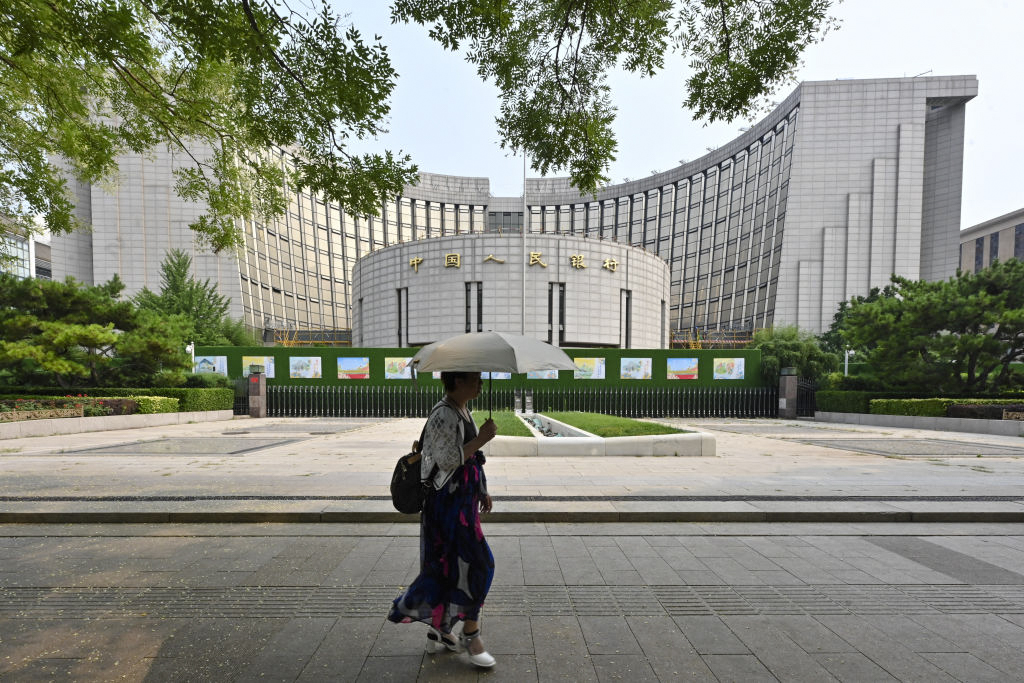China’s financial figures for October indicate that its economic slowdown may continue into 2025, market analysts said.
According to data released this week by China’s central bank, new bank loans fell sharply in October, while outstanding total social financing—which measures the flow of credit from the financial market into the real economy—slowed to a record low.
Analysts told The Epoch Times that the figures suggest that Beijing’s series of stimulus measures have failed to boost the confidence of businesses, consumers, and lenders so far.
According to The Epoch Times’ analysis of data published by the People’s Bank of China, China’s banks issued 500 billion yuan (about $70 billion) in new yuan loans in October. This is a 69 percent drop from September’s 1.59 trillion yuan (about $220 billion) and 200 billion yuan ($28 billion) lower than expected, according to economists polled by Reuters.
The outstanding total social financing in October slowed to a record low of 7.8 percent, down from 8 percent in September.
Notably, foreign currency-denominated loans in October dropped by 21.9 percent year on year. The growth has stayed negative for the past 28 months.
The figures reflected a “rapid decline in credit demands by both businesses and consumers,” U.S.-based Chinese economist Davy J. Wong told The Epoch Times.
China’s overdependence on investments and exports means that bank loans and social financing are key indicators of the country’s economic health, Wong said, adding that the latest data show that the economy shows no sign of recovery and could face further downward pressure in the coming months.
Meanwhile, the narrow money supply, or M1, grew negatively for the seventh month in a row, and its gap with the broad money supply, or M2, remained wide in October, at negative 13.6 percent, indicating an unwillingness to spend and invest.
Sun Kuo-hsiang, director of Taiwan Nanhua University’s Aisa-Pacific program, said that if the gap remains negative, the trend will likely continue at the end of the year and into early next year.
“Without effective policy interventions to boost market confidence, China’s economic recovery will face great challenges,” he told The Epoch Times.
Wong also supported Sun’s assessment. He said more negative figures will show that “the willingness to invest and spend will not recover in the short term.”
The Chinese economy has faced challenges in recent years due to a prolonged downturn in the real estate market, rising local government debt, and various structural issues.
In September and October, Beijing introduced a series of stimulus measures, including expansionary monetary policies such as lowering the reserve requirement ratio, interest rates, and existing mortgage rates.
However, October’s data suggest “the market’s confidence in future economic prospects has not improved, and it is still unwilling to add new loans” despite the measures, Sun said.
Wong said China could face enormous pressure in 2024 and 2025, partly owing to weakened export demand resulting from trade tensions with Europe and the United States and because “domestic policies haven’t touched the fundamental structural problems of the Chinese economy.”
Due to Chinese authorities’ past record of underreporting and covering up information, it is difficult to assess the veracity of Beijing’s financial data and the actual state of China’s economy.
Besides lowering bank rates and the reserve requirement ratio, Beijing has recently unveiled a 10 trillion yuan ($1.4 trillion) package to allow local governments to refinance their hidden debt, which is debt that is not reported in their financial books.
However, the announcement fell short of new stimulus measures to increase domestic spending, which is widely seen as the key to reviving China’s economy.
Luo Ya, Terri Wu, and Reuters contributed to this report.

